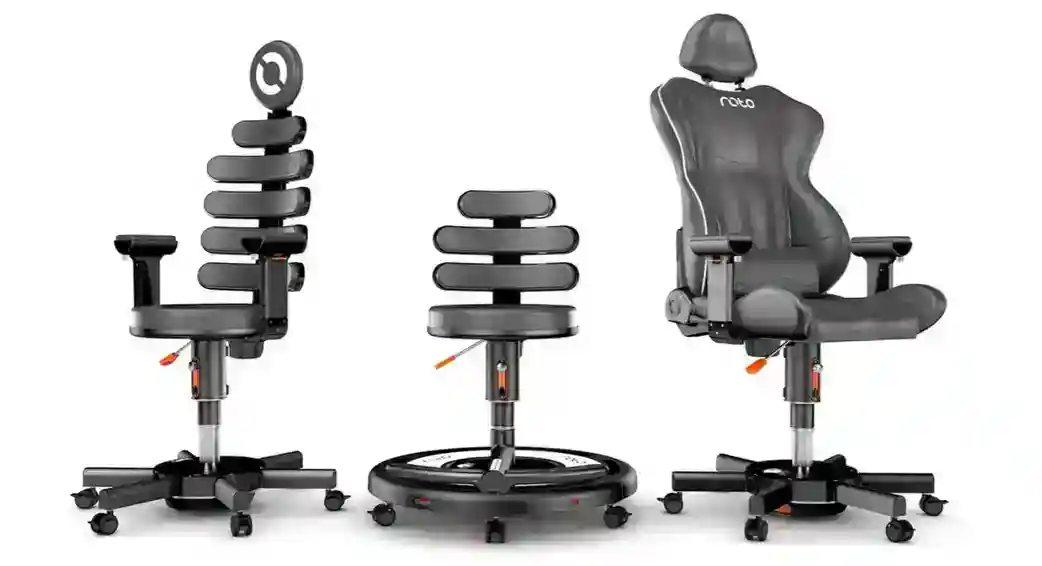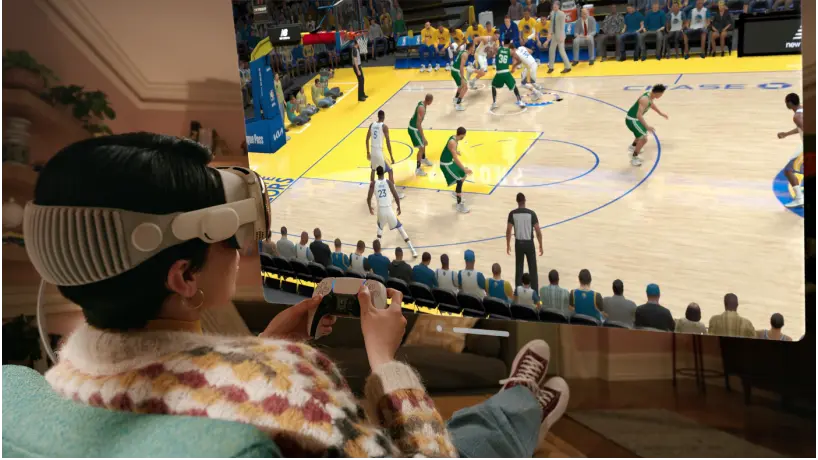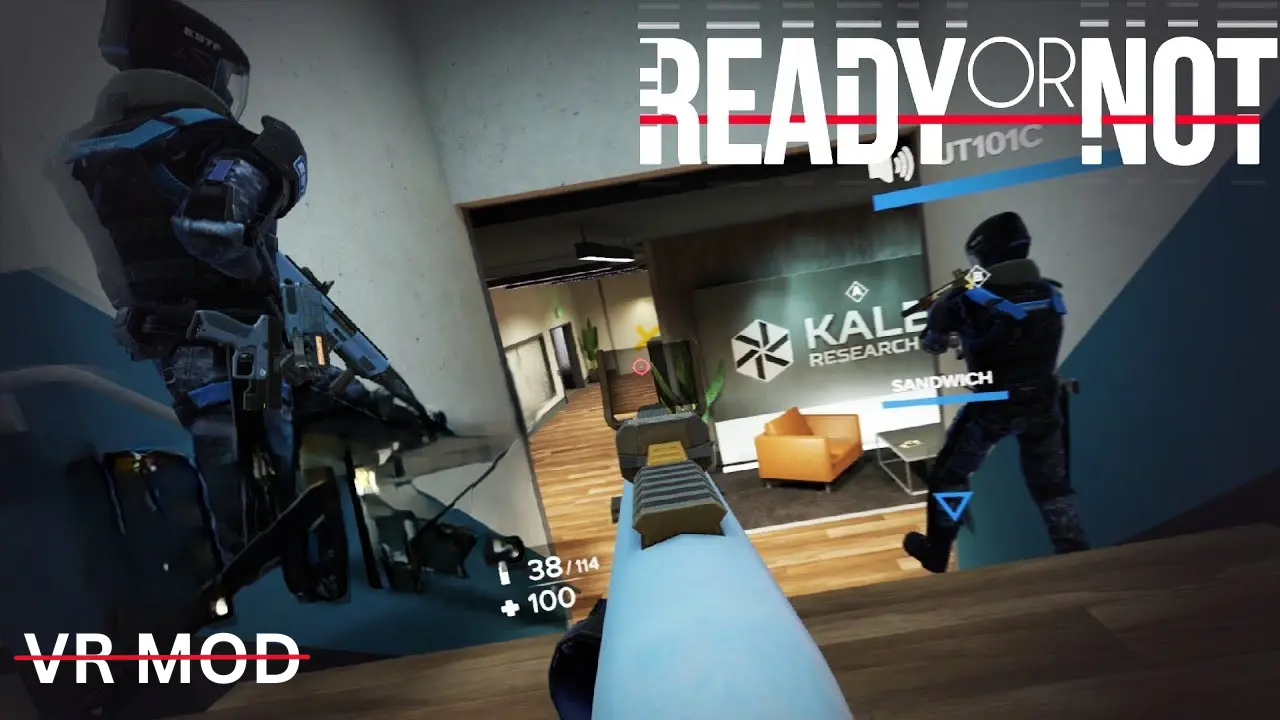Unity for XR (Extended Reality), a term encompassing augmented reality (AR), Virtual Reality (VR), and Mixed Reality(MR), has drastically changed how we interact with digital products and is in the process of evolution.
This rising tech industry has made a major impact on other industries such as Gaming, Education, and Healthcare. (Observe the rising advertisement for the use of VR in schools/universities.)
Table of Contents
Why Unity, you ask? Well, for one, about 60% of all AR/VR content that you might have seen is made on Unity. But don’t mistake this for a simple coincidence. Unity has a consistent effort for dominance in XR development.

Unity has a fabulous engine that allows creators to build seamless cross-platform XR experiences. From deploying VR games for Meta Quest, building stunning User Interface for Apple Vision Pro, building an enterprise solution for HoloLens to Developing simple mobile AR app, you can make it all in Unity.
For developers, Unity packs a diverse suite of coding tools, performance optimization options, real-time rendering capabilities that accelerate the XR Development process, and easier debugging.
Designers, on the other hand, have access to Unity’s User Interface and its many assets, allowing them to create beautiful UI/UX with 3D capabilities..

Unity provides the creative freedom to push boundaries and build interactive experiences that do not change across different platforms.
Unity for XR Developers
In a tech industry that doesn’t seem to be slowing down anytime soon, Unity is a platform that offers everything you need and, at the same time, doesn’t limit your creativity in many ways.
Unity is not just a machine; it’s like the Swiss Army knife of separating the digital and physical worlds. Whether you’re building a VR environment for Meta Quest, creating AR with the AR Foundation, or testing mixed reality on HoloLens, Unity’s features will help you create the best experience possible. There’s no limit to what you can build.
Core Features for XR Development
We have the XR Interaction Toolkit at the core of Unity’s XR development. This toolkit is like having a universal translator for input; whether your users are interacting with hand gestures or controllers, the toolkit simplifies the entire process.

It separates the systems so you can focus on building better products without having to write code for every single application (and it seems like every company is doing their own thing). This is all about making input handling better so that when you click or browse a menu and so on, you feel like you’re interacting smoothly. Unity has OpenXR and other SDKs, so it’s got an API that allows your app to run on many different devices, from an Oculus headset to a HoloLens. While the AR Foundation lets you make an app that can run for either iOS and Android.
The ecosystem allows you to write your code only once, and it also means that you can distribute all of your XR across multiple machines, saving a lot of time.
Unity requires a 120 FPS frame rate for VR to ensure a smooth and immersive experience; a drop here and there can disrupt that balance and lead to motion sickness. To that end, Unity offers performance optimization techniques:
- Occlusion Culling Prevents the engine from pushing hidden objects out of sight, thus reducing GPU memory.
- Level of Detail (LOD): Reduces the level of detail to enhance the sharpness of details.
- GPU Instancing: Provides a single-threaded instance, allowing even the most complex applications to be handled with ease.
All in all, these factors ensure that your XR app is not only mind-blowing but also works like a well-oiled machine with Unity for XR.
Scripting In Unity for XR
Unity’s scripting capabilities can breathe life into your XR projects. C# working behind the scenes allows you to make your stunning and immersive visuals more interactive and responsive.
I mean, you can create an environment where every object is a potential interaction point, where a simple grab or a swipe triggers a cascade of events. This is achieved through event-driven programming.
You write scripts that listen for user input and then execute functions that manage everything from object manipulation to complex game logic.
But Realism in XR isn’t just limited to visuals; it’s also about how things feel. Unity leverages its built-in PhysX engine to simulate physics, adding to that tangible weight and resistance to interactions. Combine this with the Audio Spatializer, and you have spatial audio that changes dynamically as users move through your virtual environment.
For projects that span multiple players, multiplayer XR is a game changer. Unity for XR supports multiplayer experiences using frameworks like Netcode for GameObjects or third-party solutions like Photon Fusion.
This lets you build shared worlds where users can interact in real time, collaborating or competing in dynamic, immersive environments.
Debugging and Testing in Unity for XR
Practically speaking, debugging in XR means checking your knowledge, adjusting your interactions, and making sure everything, from the hand gestures to your spatial audio, works together.
Unity’s debugging environment is designed to be transparent, which makes it easy to see your code in your code.
An XR simulator such as XR Device Simulator allows you to test your application without having to install hardware. These simulators demonstrate the functionality of various XR devices, allowing you to learn more about a specific situation and be able to interact with it.
Unity for XR Designers
For XR Designers/ Spatial Designers, Unity is a canvas where you can give life to your immersive and interactive products. Designing in XR means not only crafting stunning visuals but also shaping intuitive interactions that resonate with human perception.
Designing Immersive UI/UX
In XR, the interface is not limited to a flat screen; it lives in the space around the user. They’re the best practices of a spatial UI, positioning , and interacting.

To prevent neck discomfort and strain, designers need to set comfortable viewpoint ranges so that users can consume information effortlessly. Taking natural head and eye movement into account, interfaces may be located within the “sweet spot” where interaction is virtually organic. That strikes a balance between immersion and comfort.
Getting Started with Unity in XR
We have already posted a blog on starting the XR DEVELOPMENT Journey in 2025, so make sure this blog is read for detailed information.
However, for this, you will receive an easy-to-follow guide for Unity for XR.
Go over to Unity’s website and download Unity. Once installed, start a New Project and add XR Packages you will most likely want to include, such as XR Interaction Toolkit at the very least, AR Foundation, etc… AR Foundation & XR Interaction Toolkit support cross-platform development out of the box along with other platform-specific SDKs such as OpenXR & Oculus Integration.
This setup paves the way for powerful augmented, virtual, and mixed reality application development.
After that, explore Unity Learn’s specialized pathways, such as Create with VR or AR Development. These interactive tutorials lead you through building practical projects, from a basic scene setup to advanced XR interactions.
Attend Unity for XR Forums and join Discord Channels. This makes your learning curve faster.
You need to be trained with books like Unity XR Projects by Robert Howton that cover XR project development in the real world.
Add some awesome tools to your asset library, such as MRTK, VRTK, and Synty Studios’ 3D packs — all of which give you a ton of premade assets to help power your projects. Don’t rush; explore, grow this path with opportunities, and become an artist in the world of XR.
Future Trends
Unity is at the forefront of these new possibilities in AR and VR. Unity Muse and Unity Sentis redefine how we create XR content.
Muse transforms the unity Editor into a creative playground, with AI-powered tools that allow you to create textures and animations — even behaviors — from text prompts.
In contrast, Sentis places neural networks right in your builds, bringing real-time 3D content into the nooks and crannies of your app. They aren’t replacing human creativity — they’re augmenting it, enabling developers to focus on vision and creativity while AI does the relentlessly repetitive work.
Conclusion
XR (Extended Reality), which includes augmented, virtual, and mixed reality, has changed the way we work and is only evolving. This new technology is transforming sectors such as sports, education, and healthcare and enabling things like education and interactive simulations. Unity powers nearly 60% of the AR/VR market, and its cross-platform engine is keeping it at the forefront of this revolution.
So, if you are asking whether you should go for Unity for XR development and design? My answer would be 100% YES. I mean, look at all the advantages you get if you choose Unity for XR.
First would be a huge community compared to other engines like UnReal and Godot (While they have their advantages and disadvantages) Having a big community will always help you in the initial days.
The second advantage is that you don’t need that much resource (limited to PC hardware) to run Unity for XR that would be required to run UnReal Engine 5.








1 thought on “Unity for XR Developers in 2025: The Ultimate Guide to Building Next-Gen Immersive Experiences”